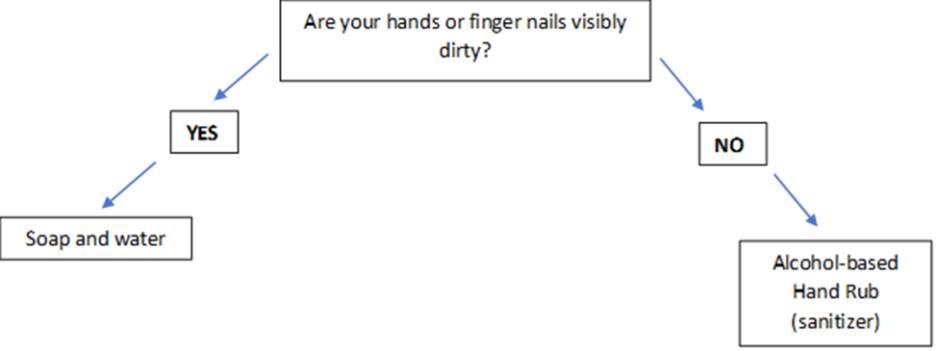Hygiene and Infection Prevention
Reducing infection is everyone’s responsibility. We want to encourage anyone who comes to us for care to do their part in infection prevention and to feel comfortable reminding any care provider to wash their hands. This is an important step in being a partner in your own care. It’s ok to remind us!
St. Joseph’s always aims to improve hand hygiene compliance as part of our relentless pursuit of safety - a strategic priority. Ultimately, we would like to surpass our overall goal of 95 per cent.
Hand hygiene simply refers to keeping your hands clean. This includes your fingernails as well!
Why clean your hands?
Infections
Infections occur when tiny germs, known as microorganisms, enter the body and multiply so fast, the immune system cannot keep up to defend itself, causing illness.
Our hands can carry many germs that are easily passed on to other surfaces, things, or people. Because of this, our hands are the primary way germs spread. Cleaning our hands is the best way to avoid getting sick and avoid making others sick.
Frequently Asked Questions
Should I use alcohol-based hand rub (sanitizer) or soap and water?
In the health care setting, the preferred method to decontaminate or remove germs from your hands is by using alcohol-based hand rubs (sanitizer). Using alcohol-based hand rub is better than soap and water (even with an antibacterial soap) when hands are not visibly dirty. If your hands are visibly dirty, use running water and soap to remove germs and visible dirt.
When should I clean my hands?
Remember we can’t see germs. People may take a while to show signs of infections, or you may never show symptoms. This is called being asymptomatic and although you may not feel sick, you have the potential to spread your germs to others and make them unwell. Although you may think that you, another person, a surface, or item has no germs, it is best to frequently clean your hands using the appropriate methods (soap and water or alcohol-based hand rubs- sanitizer).
You should clean your hands....
- Before and after eating
- After using the washroom (before washroom use is optional or as needed)
- After sneezing and/or coughing
- After blowing your nose
- After touching something that has bodily fluids (a diaper, a toothbrush, a soother, etc.)
- After shaking hands and before touching your face, mouth, nose or eyes
- Before entering a patient/resident room and before touching them or their environment
- After exiting a patient/resident room and after touching them or their environment
- Before removing a mask and other personal protective equipment (PPE)
- After removing a mask or used personal protective equipment
What are the top four things that impact effective hand hygiene?
- Jewelry should always be removed prior to doing hand hygiene.
- Artificial or long nails can harbor germs that we tend to miss. Regardless of your nail length. Make sure you clean under your nails when doing hand hygiene.
- Fingertips, between fingers, back of hands and base of thumbs are the most commonly missed areas in hand hygiene. Spread santizer or soap over all surfaces of hands when doing hand hygiene.
- Skin breakdown, cuts, crackles, and dryness can affect the cleanliness of your hands as the open skin can trap germs.
Are antimicrobial soaps more effective than alcohol-based hand rub (sanitizer)?
It’s a common misconception that antimicrobial soaps are more effective than alcohol-based hand rub (sanitizer). The preferred method to clean your hands in a hospital setting is through the use of alcohol-based hand rub (sanitizer) when hands are not visibly soiled. If hands are dirty, soap and water should always be used.
Thank you for your support in continuing to promote and improve hand hygiene compliance, ensuring a safe environment for all, and earning the complete confidence of those we serve. Please review the following for important guidance on how to properly clean your hands and prevent the spread of infection:

